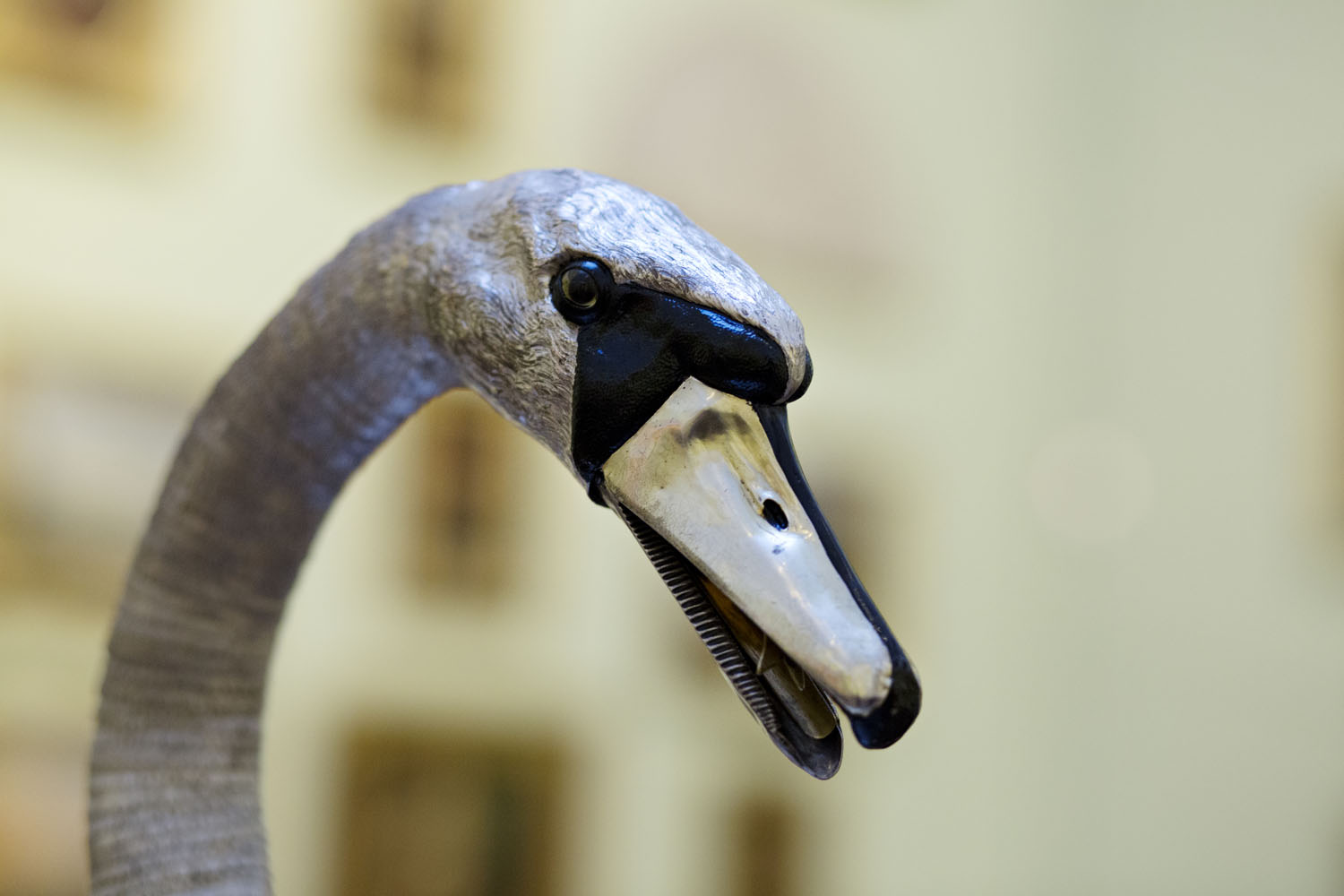Dr Howard Coutts, Curator of Decorative Arts at The Bowes Museum, shares the incredible story of the Silver Swan, which will star in the Science Museum’s 2017 Robots exhibition.
The Silver Swan is probably the best known and best loved object in The Bowes Museum. It is a life-size clockwork automaton that imitates the behaviour of a real swan. It comprises three clockwork motors, which each control the music, the glass rods and thirdly the head, neck and fish movements. The whole is surmounted by a silver casing to represent the body of the swan.
When the Swan is wound up, the music starts, the glass rods rotate, and the neck of the Swan twists back and forth in imitation of the preening motion, and then dips down to ‘catch’ a fish from those moving amongst the rotating glass rods below. The Swan then appears to swallow a fish that has been concealed in its beak all along.
It is one of a number of large and elaborate automata listed in the ‘museum’ of a London jeweller and showman, James Cox, in 1773, shortly after it was made. Cox produced these items for the Chinese market, but showed them in London after a trade slump. The works may be by the Belgian John Joseph Merlin, who also invented roller skates! It originally had an 18 feet high canopy designed by the architect James Wyatt. The Swan later turned up at the Paris International Exhibition of 1867 where it was seen by John and Joséphine Bowes. They bought it for their museum in Barnard Castle some years later.
There are very few automata like the Swan in public museums in Britain today. They tend to fall between certain collecting classes, such as toys or scientific instruments, though when they were made, people wondered if it were possible for man to create life forms in the way that God did!

The Swan’s importance lies in its ability to imitate the natural movements of a swan, and those that saw it in Cox’s museum 1773 must have briefly wondered if it were real or artificial. There was less scientific interest in automata in the 19th century, perhaps because railway engines and factory machines brought another, more practical, dimension to 18th century research into the development of mechanisms.
The Silver Swan was on display at The Bowes Museum as a static object since the Museum opened in 1892, save for a period during World War II when it was believed to have been dismantled and packed away for safety. It was restored to working order by one of the museum attendants in the late 1940s, and soon became its most popular attraction.
In the 1960s it was known to have undergone conservation and restoration on three separate occasions. From the time of the latest of these, in about 1968, it has been in almost constant demand to ‘perform’ regularly for visitors to the Museum.

In 2008 the first major conservation project was conducted in a generation; its purpose was to strip the mechanism and thoroughly clean and record every component. The work was undertaken by Matthew Read, a clockmaker and conservator.
At the same time, the Museum commissioned two historians, Roger Smith and John Martin Robinson, to research the history of the Swan and its makers. The results of both projects have been made public in the pages of Country Life magazine (13th May 2009) and in a multimedia interactive presentation in the new Silver and Metals Gallery in the Bowes Museum.
The Museum’s understanding of this important and outstanding mechanism has been enhanced immeasurably by the recent research and conservation projects and with this, our ability to interpret and care for it. The Bowes Museum is very happy to lend this object to the Science Museum in London for its Robots exhibition so that we gain further knowledge and insight into the background of, and the reasons for the creation of this remarkable object.
The Silver Swan can be seen in the Science Museum’s Robots exhibition from 8 February 2017 – 23 March 2017, it will then return to The Bowes Museum in County Durham.
Dr Howard Coutts is Curator of Decorative Arts at The Bowes Museum, Barnard Castle, County Durham.